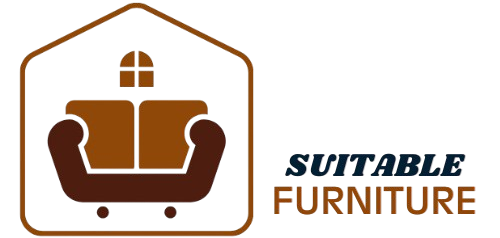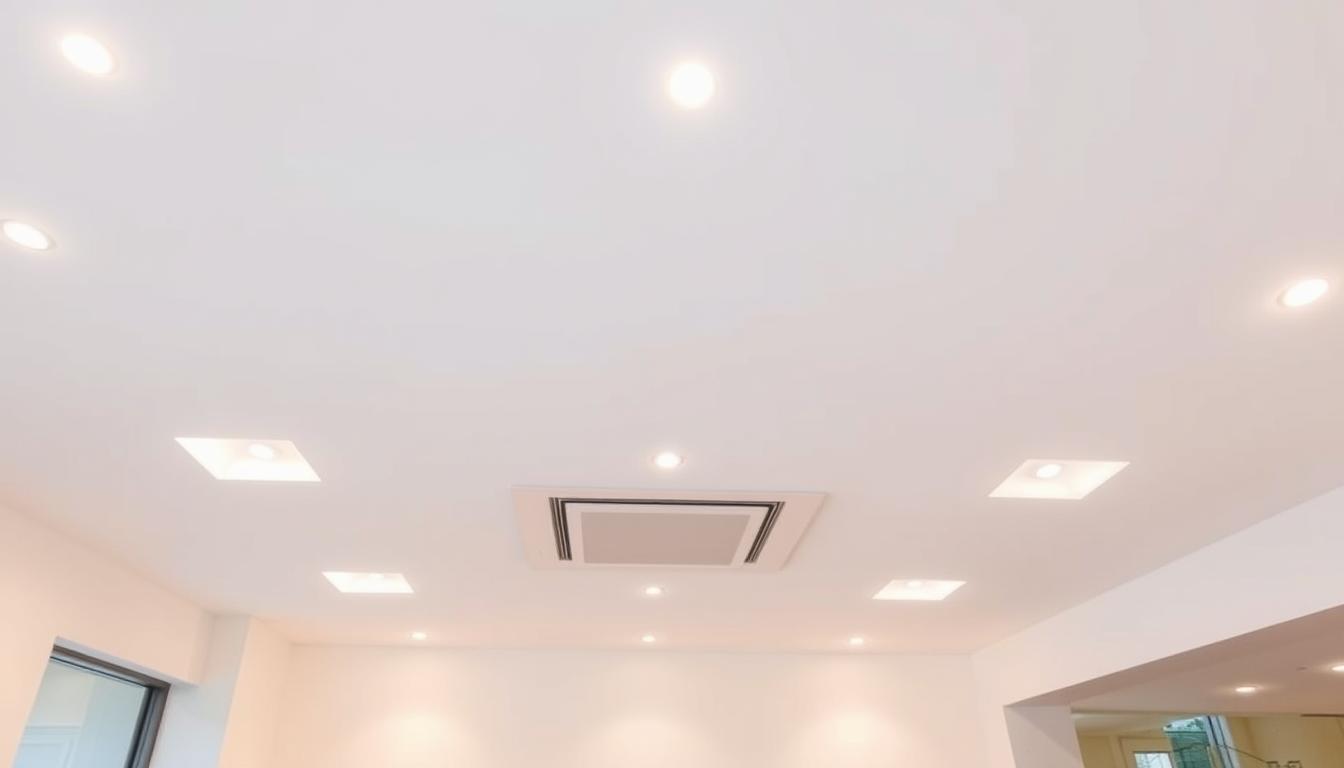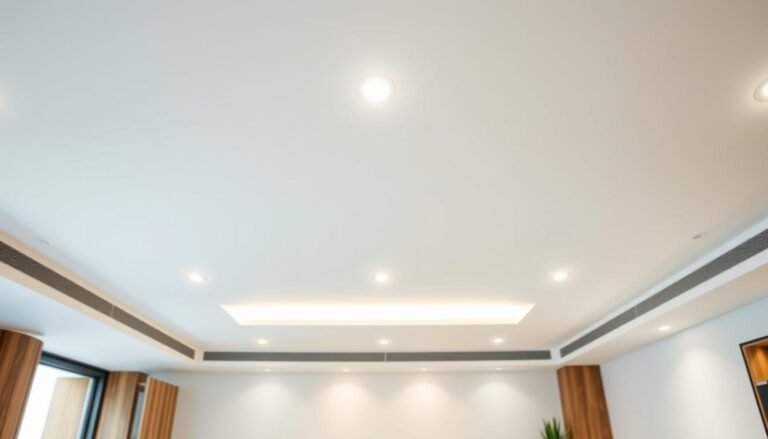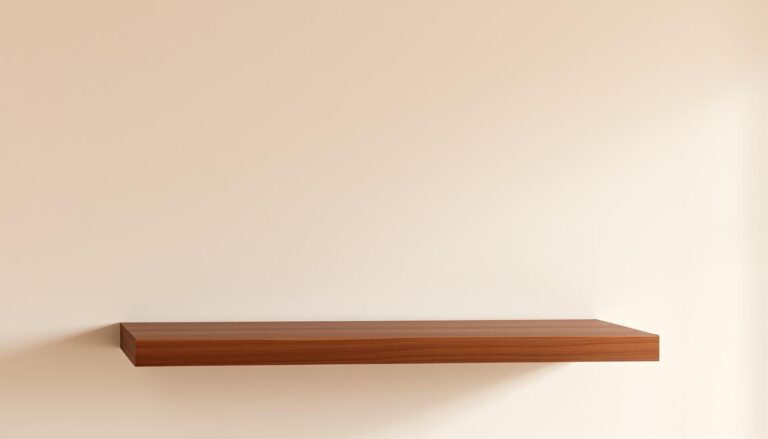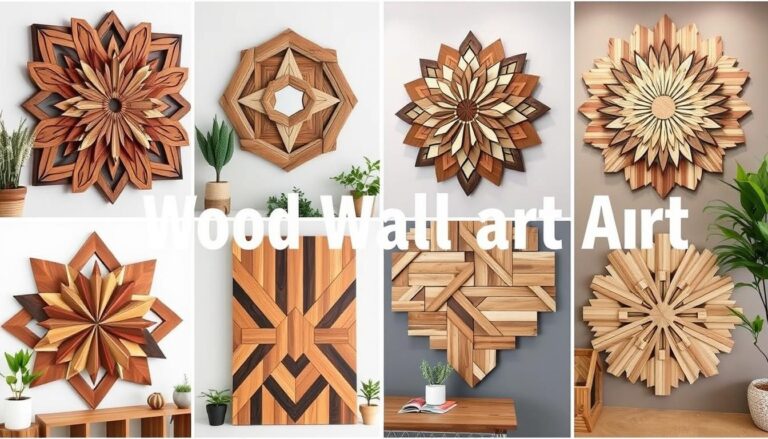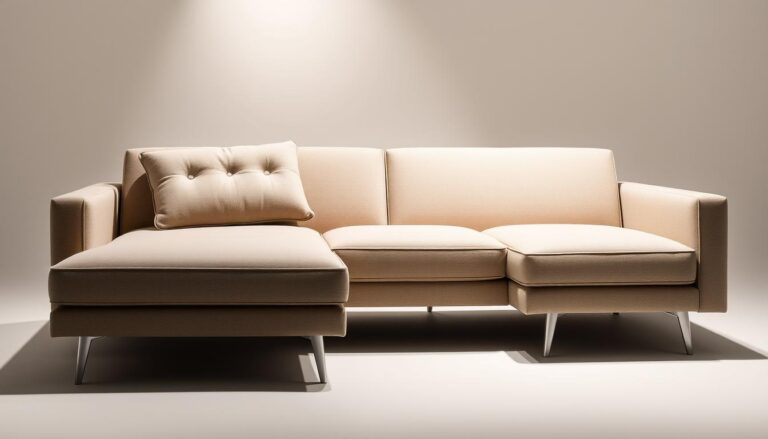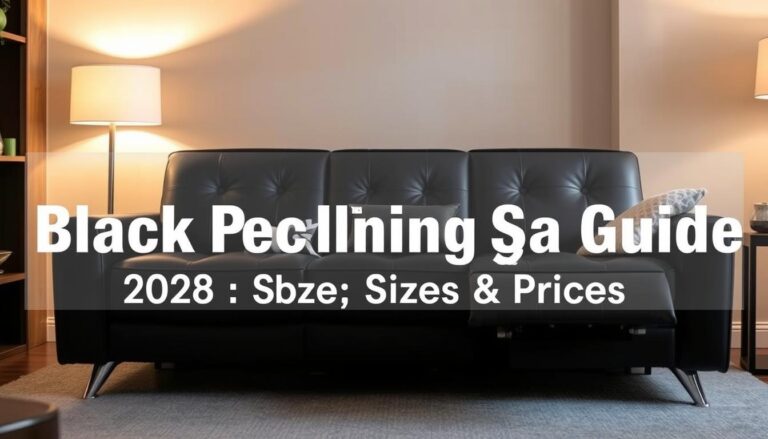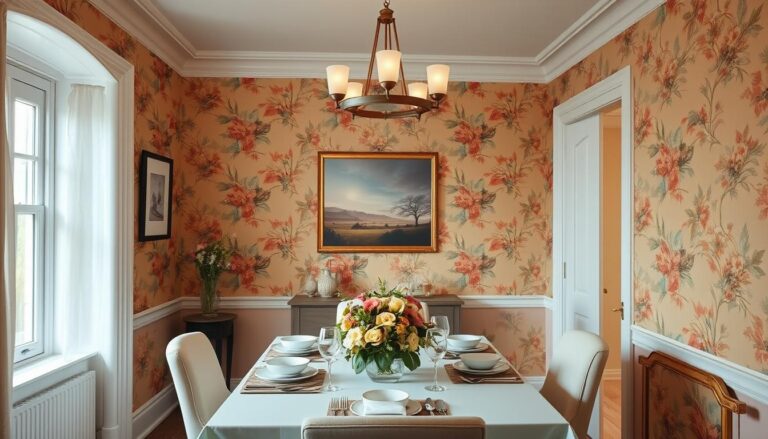Recessed Light Bulbs Guide 2025: Types, Placement & Tips
Are you looking to upgrade your home’s lighting system but unsure where to start? Choosing the right recessed light bulbs can be overwhelming, given the numerous options available.
In 2025, the world of recessed lighting is more diverse than ever. You’ll find various types, styles, and technologies to consider. Whether you’re renovating your kitchen, living room, or office, understanding the different recessed lighting options is crucial. It helps achieve the perfect ambiance and functionality.
As you explore the world of light bulbs for recessed lighting, you’ll find a range of choices. These choices cater to different needs and preferences. This comprehensive guide will walk you through the types, placement strategies, and valuable tips. It will help you make informed decisions for your lighting needs.
Key Takeaways
- Understand the different types of recessed light bulbs available in 2025.
- Learn effective placement strategies for optimal lighting.
- Discover valuable tips for choosing the right recessed lighting options.
- Explore the latest technologies in recessed lighting.
- Make informed decisions for your home or office lighting needs.
Understanding Recessed Lighting Basics
Recessed lighting is a key part of modern home design. It offers a sleek look and illuminates your space well. Unlike other lights, it’s installed in the ceiling, giving a clean look.
What Makes Recessed Lighting Different
Recessed lighting stands out because it’s installed in the ceiling. This setup offers flexible lighting options. You can light up specific areas or the whole room.
It’s great for those who want a tidy space. Homes with recessed lighting look bigger and more modern.
Benefits of Recessed Lighting in Modern Homes
Recessed lighting has many benefits in modern homes. It makes rooms look open and bright. Plus, it’s an energy-efficient solution with options like LED.
It can be used for different lighting needs. Knowing its benefits helps you choose the right lighting for your home.
| Benefits | Description |
|---|---|
| Aesthetic Appeal | Creates a clean, minimalist look by being recessed into the ceiling. |
| Versatility | Can be used for ambient, task, or accent lighting. |
| Energy Efficiency | Options like LED recessed lighting reduce energy consumption. |
Types of Recessed Light Bulbs
Recessed lighting bulbs come in many types, like LED, halogen, CFL, and smart. Each type meets different needs and tastes. It’s important to know the differences to choose the right bulbs for you.
LED Recessed Light Bulbs
LED recessed lighting is popular for being energy-efficient and lasting long.Discover top-rated Philips LED recessed light bulbs, known for their energy efficiency and long lifespan. LEDs use less energy than old bulbs and can last up to 25 times longer. They come in many colors, making them good for various uses.
A U.S. Department of Energy quote shows LEDs’ benefits: “LEDs use up to 90% less energy and last up to 25 times longer than traditional incandescent bulbs.” This makes LEDs great for those wanting to save energy.
Halogen Recessed Bulbs
Halogen bulbs give a bright, white light and are often used in recessed lighting. They are cheap at first but don’t last as long as LEDs. Halogen bulbs also get hot, which can be a problem in some places.
CFL Recessed Lighting Options
CFL recessed lighting options are another energy-saving choice. CFLs use less energy and last longer than incandescent bulbs. But, they have a bit of mercury, so they need special disposal.
Smart Recessed Light Bulbs
Smart recessed light bulbs add tech to lighting, letting you control them with phones or voice assistants.For instance, the Philips Hue BR30 smart LED bulbs fit recessed cans perfectly and offer voice‑control via Bluetooth or Hue Bridge. You can set them to change color, dim, or turn on/off at set times. They make rooms look better and are very convenient.
| Bulb Type | Energy Efficiency | Lifespan | Special Features |
|---|---|---|---|
| LED | High | Long (up to 25,000 hours) | Dimmable, Color Temperature Options |
| Halogen | Low | Short (2,000-4,000 hours) | Bright, White Light |
| CFL | Medium | Medium (8,000-10,000 hours) | Energy Efficient, Contains Mercury |
| Smart | Varies | Varies | Programmable, Controlled via App or Voice |
Recessed Lighting Terminology Explained
The world of recessed lighting is filled with specific terms. These terms are important for getting the best results. Knowing them helps you make smart choices about your lighting.
Housing Types and Sizes
Recessed lighting housings come in different types and sizes. Each is made for a specific use. The housing is the part you install in the ceiling.
New construction and remodel are the main types. New construction housings go in before the drywall. Remodel housings fit into existing ceilings. Sizes range from 4 to 6 inches in diameter.
| Housing Type | Description | Common Sizes |
|---|---|---|
| New Construction | Installed before drywall | 4, 5, 6 inches |
| Remodel | For existing ceilings | 4, 5, 6 inches |
Trim Styles and Functions
Trim is the part of the recessed light you see. It comes in different styles for looks and function. You’ll find baffle, reflector, and lensed trims.
Baffle trims cut down on glare. Reflector trims boost light output. Lensed trims give a soft, diffused light.
Want to personalize your lighting look? Browse our selection of Stylish Covers for Recessed Lighting.
Beam Spread and Light Distribution
Beam spread is how light spreads from the bulb. It’s key in figuring out how much area a light can cover. Narrow beam spreads are good for task lighting. Wide beam spreads are better for general lighting.
Knowing about beam spread helps you place lights right.
Learning these basic terms helps you pick and install recessed lighting that fits your needs.
Choosing the Right Recessed Light Bulbs for Your Space
Choosing the right recessed light bulbs is key to lighting your space well. The right bulbs offer the right amount of light and improve your home’s look and energy use.
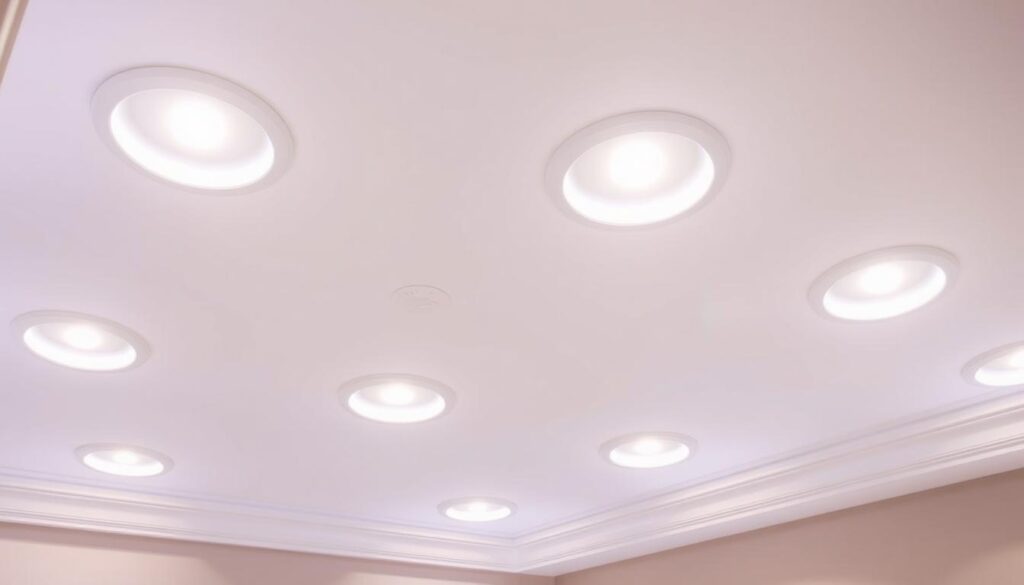
Assessing Room Requirements
Before picking recessed light bulbs, think about what your room needs. Consider the room’s size, purpose, and activities. For example, kitchens need bright lights, while bedrooms are better with softer lights.
Color Temperature Considerations
Color temperature affects a room’s mood and function. Warm white light (2700K-3000K) is great for cozy areas like living rooms and bedrooms. On the other hand, cool white light (3500K-5000K) is best for bright spaces like kitchens and bathrooms.
Matching Bulbs to Fixture Types
Make sure the bulb fits your recessed lighting fixture. Not all bulbs work with every fixture. Always check the fixture’s specs before buying. Some fixtures need LED or IC-rated bulbs for safety and efficiency.
By thinking about these points, you can pick the best recessed light bulbs. They will light your space well and make it look and work better.
PAR vs BR Recessed Bulbs: Understanding the Difference
It’s important to know the difference between PAR and BR recessed bulbs. Each type has its own features. These features make them perfect for different lighting needs.
PAR Bulbs: Features and Applications
PAR (Parabolic Aluminized Reflector) bulbs shine light in a focused beam. They’re great for tasks that need a lot of light, like reading. You can pick from different beam angles to fit your needs.
PAR bulbs are a top pick for recessed lighting. They’re perfect for kitchens, living rooms, and outdoor areas. This is because they highlight specific spots well.
BR Bulbs: Features and Applications
BR (Bulged Reflector) bulbs spread light over a wider area. They’re best for lighting up big spaces or creating a cozy feel. BR bulbs give off soft, diffused light.
BR bulbs work well in recessed lighting fixtures for a broader light. They’re ideal for rooms needing overall light, like family rooms or bedrooms.
Gimbal vs Fixed Recessed Lighting: Which to Choose
Gimbal and fixed recessed lighting are two popular choices. Each has its own benefits and uses. It’s important to think about what your space needs in terms of lighting.
Fixed Recessed Lighting Benefits
Fixed recessed lighting is simple and often cheaper. It’s great for general lighting because it shines in one direction. This makes it perfect for places where the light doesn’t need to change much.
It’s also easy to put in and keep up. This is because it doesn’t have moving parts.
Adjustable Gimbal Lighting Advantages
Gimbal recessed lighting is flexible and adjustable. You can move the light to highlight certain areas. This is super useful in kitchens or living rooms where you need to focus on specific tasks.
It also lets you create cool lighting effects. You can make a spotlight on certain things in the room.
So, whether you choose gimbal or fixed recessed lighting depends on what you need. Knowing the good points of each helps you pick the best for your space.
Best Wattage for Recessed Lights
Choosing the right wattage for your recessed lights is key. It affects the look and feel of your space. The best wattage depends on the room’s purpose, size, and the lighting you want.
Wattage Recommendations by Room
Kitchens and bathrooms need bright lights, usually 40-60 watts for LED bulbs. Living rooms and bedrooms can get by with 20-40 watts.
| Room Type | Recommended Wattage (LED) |
|---|---|
| Kitchen | 40-60 watts |
| Living Room | 20-40 watts |
| Bedroom | 20-40 watts |
| Bathroom | 40-60 watts |
Lumens vs Watts: Understanding Light Output
When picking recessed light bulbs, know the difference between lumens and watts. Lumens show how bright the light is. Watts tell you how much energy it uses. For example, a 60-watt incandescent bulb can be replaced by a 10-watt LED that shines just as bright (around 800 lumens).
Energy-Efficient Recessed Light Bulbs
Choosing eco-friendly recessed lighting is now easier. Energy-efficient bulbs cut down on energy use and environmental impact.
Energy Star Rated Options are a smart start.Check out SYLVANIA Energy Star certified LED bulbs, designed to cut energy costs without sacrificing brightness. These bulbs meet strict energy standards set by the U.S. Environmental Protection Agency. They use less energy but still light up your space well.
Key Features of Energy Star Rated Bulbs
- Use significantly less energy than traditional bulbs
- Last longer, reducing replacement needs
- Available in a variety of styles and color temperatures
Long-Term Cost Savings
Switching to energy-efficient bulbs saves money in the long run. They might cost more at first, but they last longer and use less energy. For example, LED bulbs use 90% less energy and last 25 times longer than incandescent bulbs.
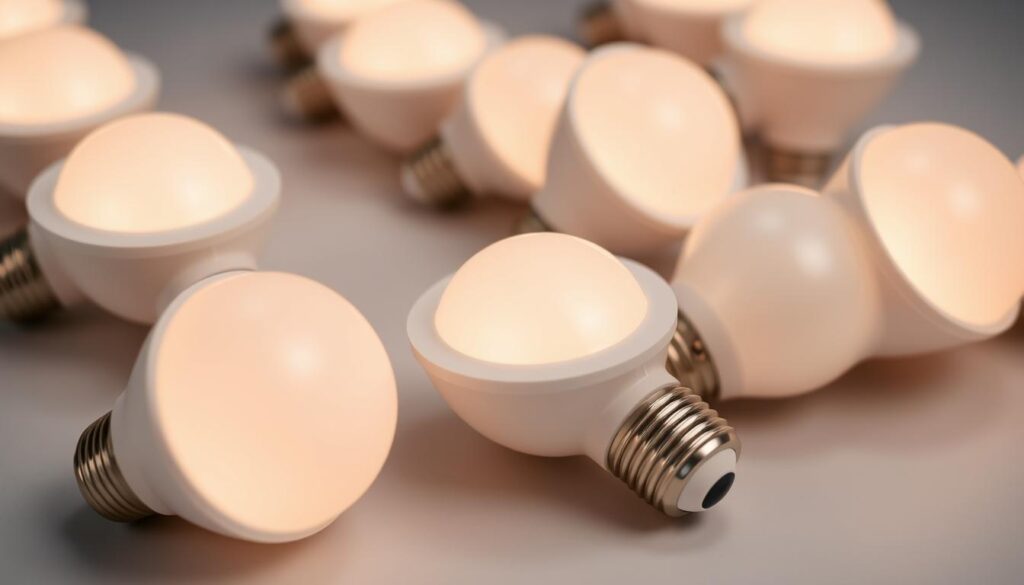
Environmental Benefits
Energy-efficient bulbs are good for the planet. They cut down on energy use, which means less pollution. Plus, they last longer, so we throw away fewer bulbs.
Some key benefits include:
- Reduced carbon footprint
- Less waste from frequent bulb changes
- Lower energy use for a greener future
Dimmable Recessed Light Bulbs
Dimmable recessed lighting lets you adjust the light to fit any mood. It’s perfect for relaxing, entertaining, or working. You can change the brightness to match your needs.
Benefits of Dimmable Lighting
Dimmable lighting adds ambiance, saves energy, and makes bulbs last longer. You can make a room cozy or bright. It’s great for areas like living rooms or dining rooms.
Dimming also saves energy. It cuts down power use, which can lower your bills. The U.S. Department of Energy says dimming LEDs can save up to 30% of energy.
Key benefits of dimmable lighting include:
- Enhanced ambiance and mood control
- Potential energy savings
- Extended lifespan of light bulbs
Compatibility with Dimmer Switches
To get the most from dimmable recessed lighting, make sure your bulbs work with your dimmer switches. Not all bulbs are compatible. Using the wrong ones can cause flickering, shorten bulb life, or damage the dimmer.
When picking dimmable bulbs, look for ones labeled as “dimmable.” Make sure they match your dimmer switch type. Some bulbs need specific dimmers, so always check the manufacturer’s advice.
| Dimmer Type | Bulb Compatibility | Notable Features |
|---|---|---|
| Leading-edge dimmers | Traditional incandescent, some LEDs | Common in older homes |
| Trailing-edge dimmers | Most modern LEDs | Designed for low-voltage applications |
| Smart dimmers | Smart bulbs, some LEDs | Offers advanced control features via apps |
Recessed Lighting Placement Guide
Effective recessed lighting placement is more than just looks; it’s about creating a comfortable space. The right placement can greatly improve how your space feels and looks.
Recessed Lighting Calculator Basics
Using a recessed lighting calculator is key in planning your lighting project. It helps figure out the right number and placement of fixtures.
For a complete step-by-step guide on using a recessed lighting calculator, visit our Recessed Lighting Calculator.
How to Measure Your Space
To use a recessed lighting calculator well, you need to measure your space accurately. Measure the room’s length and width in feet.
Determining Fixture Quantity
With your room dimensions, you can figure out how many fixtures you need. The calculator will look at room size, lighting level, and fixture type.
Optimal Spacing for Even Illumination
Even illumination is key, and spacing is crucial. Space recessed lights 3 to 6 feet apart, based on ceiling height and lighting type.
For a more precise calculation, use this table as a guide:
| Ceiling Height | Spacing |
|---|---|
| 8 feet | 3-4 feet |
| 9 feet | 3.5-4.5 feet |
| 10 feet | 4-5 feet |
Avoiding Common Placement Mistakes
Don’t place recessed lights too close to walls or too far apart. This can cause uneven lighting. Also, think about your furniture layout and the tasks you’ll do in the space.
As lighting experts say, “The key to successful recessed lighting is balance and harmony.” This means matching fixture numbers to room size and brightness level.
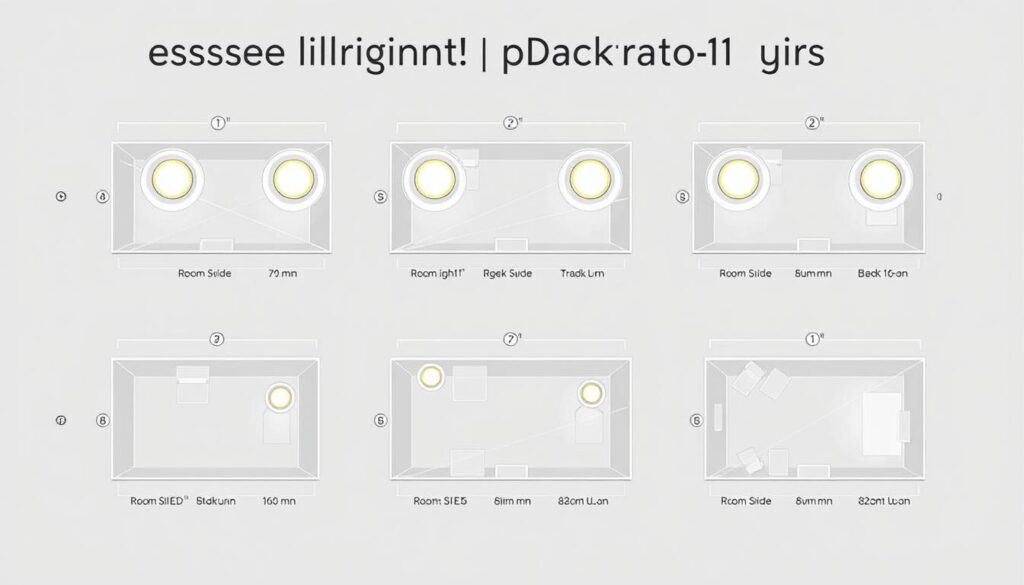
Best Recessed Light Bulbs for Different Rooms
Recessed lighting can change how your home feels. It’s key to choose the right bulbs for each room. Each room needs its own lighting style, making your home both useful and beautiful.
Best Recessed Light Bulbs for Kitchen
The kitchen is where things happen, needing light that’s both useful and welcoming. For work areas, pick LED bulbs with high CRI (Color Rendering Index). This ensures food looks good and colors pop.
Task Lighting Considerations
In the kitchen, brightness and color temperature matter a lot. Choose bulbs with a color temperature of 3500K to 5000K. This gives a bright, lively light.
Ambient Lighting Solutions
For a cozy feel, use bulbs with a warmer tone, around 3000K. Dimmable bulbs are great for adjusting the light as you like.
Recessed Lighting for Bathroom
Bathrooms need light that’s both useful and flattering. Moisture-resistant recessed light bulbs are a must. Also, bulbs with high CRI make the light look good and feel right.
Living Room and Bedroom Applications
In living rooms and bedrooms, we want a cozy, relaxing vibe. Soft white bulbs (2700K-3000K) offer a warm, inviting light. Dimmable bulbs help change the light for different activities and moods.
Shallow Recessed Lighting Solutions
Homeowners with limited ceiling space find shallow cans a great lighting option. These lights fit into tight spaces, perfect for rooms with low ceilings or unique designs.
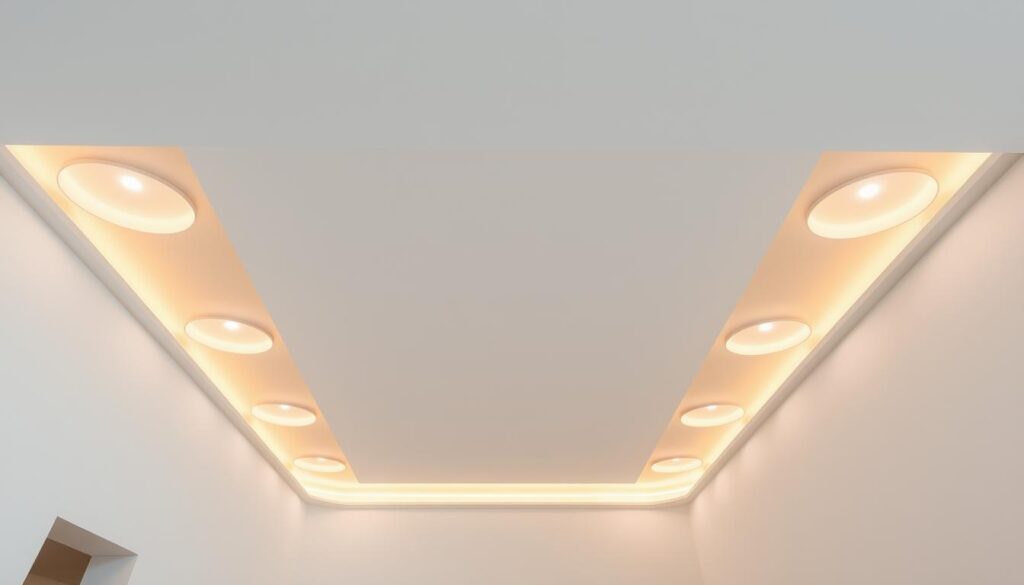
When to Use Shallow Cans
Shallow cans are great when regular recessed lighting won’t work. They’re best for:
- Low-ceilinged rooms where standard recessed lights won’t fit
- Areas with plumbing or ductwork that can’t be moved
- Retrofitting projects where existing fixtures are too deep
These situations need creative lighting solutions. Shallow cans offer the right light without taking up too much space.
To discover the best ceiling types that work beautifully with recessed lighting, explore our Best Ceilings with Recessed Lighting.
Top Shallow Recessed Lighting Options
Here are some top shallow recessed lighting choices:
- LED shallow cans: Energy-efficient and long-lasting
- Dimmable shallow recessed lights: Offering flexibility in lighting control
- Smart shallow recessed lighting: Integrates with home automation systems
When picking shallow recessed lighting, think about lumens, color temperature, and compatibility. This ensures the best performance.
Recessed Puck Lighting Applications
Recessed puck lighting is a favorite among homeowners. It adds a soft, effective glow to any space. These lights are great for under-cabinet lighting and display lighting, making rooms both functional and beautiful.
Under-Cabinet and Display Lighting
Recessed puck lights are often used under kitchen and bathroom cabinets. They create a warm glow that looks good and helps with lighting. For example, in kitchens, they light up countertops, making cooking easier.
These lights also shine on decorative items, artwork, or architectural details. They draw attention to these features, making displays more appealing.
Installation Considerations for Puck Lights
When installing puck lights, several things are important. First, pick the right spot for them. For under-cabinet lighting, aim for a spot that’s not too obvious but still lights up the area well.
Also, think about what kind of puck light you need. Some are for mounting on surfaces, while others are for recessed installation. Picking the right one is key.
For more design ideas and advanced applications, check out our detailed Recessed Puck Lighting Guide.
| Application | Recommended Puck Light Type | Key Benefits |
|---|---|---|
| Under-Cabinet Lighting | Recessed | Even illumination, aesthetically pleasing |
| Display Lighting | Surface Mount or Recessed | Flexibility in design, highlights decorative items |
Lighting experts say puck lights are great for many uses. They’re flexible and stylish, perfect for both task and accent lighting. Their subtle glow makes them a popular choice for homeowners.
How to Install Recessed Light Bulbs
Knowing how to install recessed light bulbs is key for safety and good lighting. It involves several steps. These steps ensure your lights work well and safely.
Tools and Materials Needed
Before starting, you need the right tools and materials. You’ll need:
- The correct replacement bulbs for your recessed lighting fixtures
- A ladder or step stool to reach the fixtures
- A soft cloth or gloves to handle the bulbs
- Any specific tools recommended by the manufacturer of your recessed lighting
Always check the manufacturer’s instructions for any specific requirements or recommendations for tools and materials.
Step-by-Step Installation Guide
Here’s how to install your recessed light bulbs correctly:
Preparing the Fixture
First, turn off the power to the lighting circuit at your electrical panel. Make sure the light is dark before you start. Remove any trim or coverings to get to the bulb.
Installing the Bulb Correctly
Take out the old bulb carefully. Handle the new bulb by the base to avoid touching the glass. Put the new bulb into the socket, making sure it fits right.
Testing Your Installation
After installing the new bulb, restore power to the circuit and test the light. Make sure it’s working right. Put back any trim or coverings you removed.
Safety Precautions
Safety is the most important thing when installing recessed light bulbs. Always turn off the power to the circuit before starting. Use a ladder or step stool safely. Be careful when handling electrical parts. If you’re unsure, consider getting a professional.
By following these steps, you can install your recessed light bulbs safely and successfully.
Retrofit Recessed Light Bulbs
Retrofit recessed light bulbs are a simple and affordable way to update your lighting. They let you improve your lighting without big renovations or new fixtures. By picking the right bulbs, you can make your space look better and save on energy.
Converting Existing Fixtures
Changing your recessed lighting to new bulbs is easy. First, figure out what kind of fixture you have and find the right bulb. Most bulbs fit many fixtures, but always check the details. Then, just follow the instructions to swap out the old bulb for the new one.
Benefits of Retrofitting
Upgrading your recessed lighting has many perks. One big plus is saving energy. New bulbs, like LEDs, use much less power than old ones. Plus, it’s cheaper than getting new fixtures. You can also add smart or dimmable features later, making your lighting more flexible.
Looking for the best options to upgrade your fixtures? Explore our Best LED Recessed Lighting Retrofit Kits.
Troubleshooting Common Recessed Lighting Problems
Fixing recessed lighting problems is key to keeping your space looking and working great. Recessed lights can sometimes have issues that need fixing for the best performance.
Flickering Lights
Flickering lights can come from many things, like the wrong bulb, loose wires, or power changes. First, make sure the bulb fits with your dimmer switch. Then, check all wires are tight. If problems keep happening, get an electrician’s help.
Overheating Issues
Too much heat can shorten bulb life and even start fires. Make sure your lights are made for the bulbs you use. Bulbs that are too bright can get too hot. Try LED bulbs, as they don’t get as hot as old-style bulbs.
Bulb Compatibility Problems
Not every bulb fits every light fixture. Always check the light’s details to pick the right bulb. Some lights need special bulbs to work right.
By fixing these common problems, your recessed lighting will work better and look great.
Conclusion
Now you know a lot about recessed lighting. This guide has covered the basics, types of bulbs, and how to place them. It also gave you tips on how to install them.
Think about what you need and like when choosing lighting. Pick the right bulb type, wattage, and color to get the look and feel you want.
Make sure to follow the manufacturer’s instructions for installation and upkeep. With these tips, you’ll enjoy great lighting in your home. It will look better and work better too.
